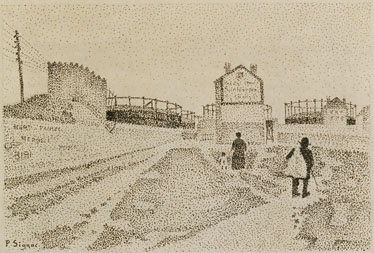The rag-and-bone man's round
It was the proliferation of printing that made the ragpicker's fortune: the paper industry was in need of increasing amounts of cloth. Cotton and linen were highly sought after. From the 18th century onwards the export of cloth was taxed and was even prohibited in the 19th century! The other treasure of the street was bones, for these had many uses. "Animal charcoal" or "bone black" was extracted for use in refining sugar beet for the rapidly expanding sugar industry. It was made into buttons, combs and knife handles. It was used to make gelatin and glues. It was used as fertilizer. Last but not least, phosphate was extracted from bones for the manufacture of matches.
In addition, the ragpicker collected glass, cork, all kinds of metal, leather and even bread!
Almost all the unclassified small industries are a triumph of the imagination fired by gnawing hunger pangs. The first person who picked up a cigar end on the street, then two, then three, and having chopped them all up, sold the resulting compound as smoking tobacco, did not take up this unusual profession deliberately like you do that of manager or concierge. It was chance, the need to eat and potential rich pickings that drove him to this career.
He then made this reasoning based on statistics: every day in Paris at least three hundred thousand cigars are smoked; there must therefore be, somewhere, especially under the pavement tables of boulevard cafés, three hundred thousand cigar ends. The prospects were good; he glimpsed a large-scale operation, took on partners, and there you have yet another manufacturer, a manufacturer of forbidden tobacco!
Extract from Les petites industries by Edmond Texier in Paris-Guide / par les principaux écrivains et artistes de la France, 1863











